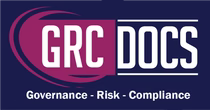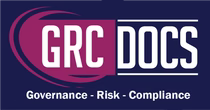SOC2 Business Continuity Template Download
Introduction
Disruptions—from cyberattacks and natural disasters to system failures—can bring businesses to a grinding halt. That’s why every organization needs a Business Continuity and Disaster Recovery (BC/DR) Policy.
But drafting a policy from scratch can be time-consuming. That’s where our Business Continuity and Disaster Recovery Policy Template comes in—structured to help you operationalize resilience, risk reduction, and fast recovery.
In this blog, we’ll walk you through how to customize and implement this template effectively for your organization.

What Is A BC/DR Policy?
A Business Continuity and Disaster Recovery Policy outlines your organization's framework for responding to major disruptions. It ensures your business can:
- Continue operating during a disruption (BC)
- Recover systems and data after a disaster (DR)
-
Protect employees, data, and reputation
Step-by-Step Guide to Using the BC/DR Policy Template
1. Customize the Template Basics
Replace placeholder fields like:
- <Organization Name> with your actual company name
- Version number, date, approver names, and signatures
- References to internal documents like your Risk Assessment or Incident Response Plan
2. Define Scope and Roles Clearly
The policy applies to:
- Staff, contractors, consultants, third parties, and visitors
Roles should be tailored:
- Management oversees implementation and funding
- IT/Security Team handles infrastructure resilience and recovery
-
Employees follow safety protocols and reporting procedures
Include HR, Facilities, and Legal if they’re involved in your continuity plan.
3. Form a BC/DR Committee
Create a Business Continuity/Disaster Recovery Committee with cross-functional members.
As per the template:
- Identify backup personnel
- Define communication channels (e.g., Slack, Google Chat, Email, Phone)
- Maintain clear documentation of responsibilities (reference your BCP Team Annexure)

4. Perform a Business Impact Assessment (BIA)
This is critical. The BIA helps identify:
- Critical processes and dependencies
- Financial and operational impacts of downtime
-
RTO (Recovery Time Objective) and RPO (Recovery Point Objective) values
Tip: Update this annually and involve key process owners
5. Create and Link to a Business Continuity Plan (BCP)
According to the template, your BCP should:
- Identify critical services and continuity steps
- Define alternate work locations, suppliers, and communication plans
- Include procedures for internal and external communication during an incident
- Be reviewed, tested, and approved annually
Use this policy to govern your BCP creation—the policy sets the rules, the BCP provides the playbook.
6. Set Up a Disaster Recovery Plan (DRP)
The DRP focuses on the technical recovery of systems and data.
This section helps you:
- Define minimum uptime (e.g., 99.9%)
- Document RTO and RPO targets for systems like:
- Firewalls
- Web servers
- Detail restoration procedures, notification protocols, and backups
Link this policy to your backup strategy, cloud recovery platforms, or DR-as-a-Service (DRaaS) tools
7. Define Risk and Security Measures
The template requires bi-annual risk assessments to:
- Identify evolving threats (cyber, supply chain, pandemics)
- Adjust mitigation strategies
- Improve resilience
Also, it mandates security measures aligned with:
- Australian Cyber Security Centre (ACSC)
- New Zealand National Cyber Security Centre (NCSC)
- SOC 2 controls (CC 2.2, CC 7.5, CC 9.1)
8. Establish Access Controls
Ensure access to systems during and after a disaster follows:
- Least privilege principles
- Audit logging
- Controlled restoration of access post-recovery
Make sure your IAM tools and access policies align with this section.
9. Train Your People
Your training plan should include:
- Employee roles during a disruption
- How to report incidents
- Tabletop exercises or simulation drills
- Awareness of alternate work arrangements and emergency contacts
Log attendance and comprehension through LMS or email confirmation

10. Schedule Regular Reviews
The policy requires annual reviews or after:
- Major incidents
- Organizational changes
- Regulatory updates
Assign a BC/DR lead to track the review calendar, coordinate updates, and manage stakeholder sign-off.
11. Document All Exceptions
If any part of the policy is not followed (e.g., remote teams using unsecured networks), document:
- Who approved the exception
- The reason
- Compensating controls
This protects your organization during audits.
Why Use This BC/DR Policy Template?
Using this template:
- Saves 30–40 hours of policy development
- Ensures alignment with ISO 22301, SOC 2, and industry best practices
- Builds cross-functional resilience across operations, IT, and leadership
- Ensures quick recovery while minimizing data loss and reputational risk




